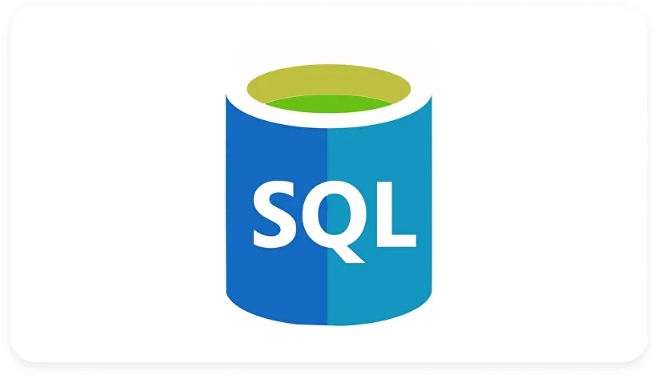SQLのBLOBおよびCLOBデータ型は何ですか?
BLOB stores binary data like images, audio, or PDFs as raw bytes without character encoding, while CLOB stores large text such as articles or JSON using character encoding like UTF-8 and supports string operations; 2. Both can handle up to gigabytes of data depending on the database, but performance and backup efficiency should be considered; 3. Database-specific equivalents include MySQL’s LONGBLOB and LONGTEXT, PostgreSQL’s BYTEA and TEXT, Oracle’s BLOB and CLOB, and SQL Server’s VARBINARY(MAX) and VARCHAR(MAX); 4. Use BLOB for non-text binaries and CLOB for large textual content to ensure proper data handling and scalability.

BLOB and CLOB are SQL data types used to store large amounts of data, especially when regular data types like VARCHAR or TEXT aren't sufficient. They’re part of the "Large Object" (LOB) category and are designed for different kinds of data.

1. BLOB (Binary Large Object)
BLOB is used to store binary data—data that isn't text-based and can't be interpreted as characters.
-
Typical use cases:

- Images (JPEG, PNG)
- Audio or video files
- PDFs or other documents
- Executable files
-
How it works:
- Stores raw byte data.
- Not interpreted by the database in terms of character encoding.
- Can be very large—often up to gigabytes, depending on the database system.
-
Example (MySQL):

CREATE TABLE media ( id INT PRIMARY KEY, photo BLOB );
⚠️ While convenient, storing files directly in BLOBs can slow down database performance and complicate backups. Often, it's better to store file paths and keep the actual files on a file system or cloud storage.
2. CLOB (Character Large Object)
CLOB is used to store large text data in a character format.
Typical use cases:
- Long articles or blog posts
- JSON or XML documents
- Logs or configuration files
- Any large textual content
How it works:
- Stores text using the database’s character encoding (like UTF-8).
- Supports standard string operations (e.g.,
LIKE,SUBSTRING) in many databases. - Handles much larger text than
VARCHARorTEXT.
Example (Oracle):
CREATE TABLE articles ( id NUMBER PRIMARY KEY, content CLOB );
Key Differences
| Feature | BLOB | CLOB |
|---|---|---|
| Data Type | Binary (raw bytes) | Character (text) |
| Use Case | Images, videos, files | Long text, documents, logs |
| Encoding | No character encoding | Uses character set (e.g., UTF-8) |
| String Ops | Not directly supported | Supported in most databases |
| Storage Size | Up to GBs (varies by DB) | Up to GBs (varies by DB) |
Database Support Variations
Different databases use slightly different names:
-
MySQL:
BLOB,LONGBLOB,TEXT,LONGTEXT -
PostgreSQL:
BYTEA(for BLOB),TEXT(for CLOB-like use) -
Oracle:
BLOB,CLOB,NCLOB(for national character sets) -
SQL Server:
VARBINARY(MAX)(BLOB),VARCHAR(MAX)orNVARCHAR(MAX)(CLOB)
So, in short:
- Use BLOB when storing non-text files like images or binaries.
- Use CLOB when storing very large text that exceeds normal string limits.
They’re powerful but should be used carefully—especially with performance and backup considerations.
Basically, if you're dealing with large content, pick BLOB for binary and CLOB for text.
以上がSQLのBLOBおよびCLOBデータ型は何ですか?の詳細内容です。詳細については、PHP 中国語 Web サイトの他の関連記事を参照してください。

ホットAIツール

Undress AI Tool
脱衣画像を無料で

Undresser.AI Undress
リアルなヌード写真を作成する AI 搭載アプリ

AI Clothes Remover
写真から衣服を削除するオンライン AI ツール。

Clothoff.io
AI衣類リムーバー

Video Face Swap
完全無料の AI 顔交換ツールを使用して、あらゆるビデオの顔を簡単に交換できます。

人気の記事

ホットツール

メモ帳++7.3.1
使いやすく無料のコードエディター

SublimeText3 中国語版
中国語版、とても使いやすい

ゼンドスタジオ 13.0.1
強力な PHP 統合開発環境

ドリームウィーバー CS6
ビジュアル Web 開発ツール

SublimeText3 Mac版
神レベルのコード編集ソフト(SublimeText3)
 PythonでSQLクエリを実行する方法は?
Aug 02, 2025 am 01:56 AM
PythonでSQLクエリを実行する方法は?
Aug 02, 2025 am 01:56 AM
対応するデータベースドライバーをインストールします。 2。CONNECT()を使用してデータベースに接続します。 3.カーソルオブジェクトを作成します。 4。Execute()またはexecuteMany()を使用してSQLを実行し、パラメーター化されたクエリを使用して噴射を防ぎます。 5。Fetchall()などを使用して結果を得る。 6。COMMING()は、変更後に必要です。 7.最後に、接続を閉じるか、コンテキストマネージャーを使用して自動的に処理します。完全なプロセスにより、SQL操作が安全で効率的であることが保証されます。
 SQLの2つの日付の差をどのように計算しますか?
Aug 02, 2025 pm 01:29 PM
SQLの2つの日付の差をどのように計算しますか?
Aug 02, 2025 pm 01:29 PM
2つの日付の違いを計算するには、データベースタイプに従って対応する関数を選択する必要があります。1。datediff()を使用してMySQLの日差を計算するか、TimestampDiff()の時間と分などのユニットを指定します。 2。SQLServerでdatediff(date_part、start_date、end_date)を使用し、ユニットを指定します。 3. PostgreSQLの直接減算を使用して日差を取得するか、抽出物(Dayfromage(...))を使用してより正確な間隔を取得します。 4。Julianday()関数を使用して、SQLiteの日差を差し引く。日付の注文に常に注意を払ってください
 多次元凝集のためのSQLキューブとロールアップ
Jul 29, 2025 am 12:28 AM
多次元凝集のためのSQLキューブとロールアップ
Jul 29, 2025 am 12:28 AM
キューブは、分析に適したすべての寸法の組み合わせの集約を生成するために使用されます。ロールアップは、階層的な関係を持つデータに適した階層レベルで徐々に要約されています。キューブは、地域、製品、四半期に応じて合計8つの組み合わせを生成し、ロールアップは年、月、日、その他のレベルの概要を生成します。キューブは、すべての次元の結果を表示するのに適しています。ロールアップは階層を表示するのに適しています。 Cubeは結果セットを爆発させる可能性があり、ロールアップはフィールドの順序に依存する可能性があることに注意してください。概要行はグループ()関数を介して識別でき、合計行はCoalesceで名前が付けられて読みやすくなります。
 クエリパフォーマンスのためにSQL注文を最適化します
Aug 04, 2025 am 11:19 AM
クエリパフォーマンスのためにSQL注文を最適化します
Aug 04, 2025 am 11:19 AM
SQLでのOrderbyのパフォーマンスを最適化するには、最初にその実行メカニズムを理解し、インデックスとクエリ構造を合理的に使用する必要があります。ソートフィールドにインデックスがない場合、データベースは「Filesort」をトリガーし、多くのリソースを消費します。したがって、大きなテーブルの直接の並べ替えは避け、ソートされたデータの量を条件を通じて削減する必要があります。第二に、フィールドをソートするための一致するインデックスを確立することで、MySQL 8.0で逆方向のインデックスを作成して効率を向上させるなど、クエリを大幅に高速化できます。さらに、インデックスベースのカーソルページング(場所> 12345など)でディープページング(Limit1000、10など)を使用して、無効なスキャンをスキップする必要があります。最後に、キャッシュ、非同期集約、その他の手段を組み合わせることで、大規模なデータセットシナリオでソートパフォーマンスをさらに最適化することもできます。
 SQLの集計関数とは何ですか?
Jul 26, 2025 am 05:43 AM
SQLの集計関数とは何ですか?
Jul 26, 2025 am 05:43 AM
SQLの集約関数は、複数行のデータから単一の概要値を計算するために使用されます。一般的な関数には、sum()summing、avg()平均値、count()count、max()最大値、min()最小値が含まれます。これらの関数は、グループ化されたデータをカウントするためにGroupByと組み合わせて使用されることがよくあります。たとえば、sum(units_sold)を使用すると、販売量の総量を取得でき、GroupByProduct_idを製品ごとにカウントできます。 count()はすべてのレコードをカウントでき、count(sale_date)は空の値を無視します。使用する場合の注意:count()を除き、null値は通常無視されます。複数の関数の混合使用は、予期しない結果を生成する可能性があります。 HAVIは、グループ化されたデータをフィルタリングするために使用する必要があります
 SQLで許可をどのように許可および取り消しますか?
Aug 04, 2025 am 09:19 AM
SQLで許可をどのように許可および取り消しますか?
Aug 04, 2025 am 09:19 AM
grantandRevokestateMentionTheUseDAMERAGEUSERSINSIONSIONSQL.1.GRANTPROVIDESPRIVIDESLIGESLIESSLIESELECT、挿入、更新、削除、削除、変更、実行、実行、実行、実行、2.SYNTAXFORNANTINGISISGRANTPRIVILEGE_TPEONOBJECT_NAMETOUSOOSER_OR_OR_OR_REX
 SQLのBLOBおよびCLOBデータ型は何ですか?
Aug 07, 2025 pm 04:22 PM
SQLのBLOBおよびCLOBデータ型は何ですか?
Aug 07, 2025 pm 04:22 PM
blobstoresbinarydatalikeimages、audio、orpdfsasrawbytes withoutcharecterencoding、whileclobstoresextextextextextextexclessarticlessursiringcharecterencodinglikeutf-8andsupportsstringoperations;
 Existsオペレーターは、SQLのINオペレーターとどのように比較されますか?
Aug 05, 2025 pm 01:08 PM
Existsオペレーターは、SQLのINオペレーターとどのように比較されますか?
Aug 05, 2025 pm 01:08 PM
UseExistsistseCeChecks、特に、特にlargeorcorreatedsubqueriesとasitstopstopstopstopsatthefirstmatchendlesnullssafely; useinformembershipChecksStsSmall、nown、onnon-nullvalueSetswhereadabilityのnullSandsandPerySandpertionsnotcris








